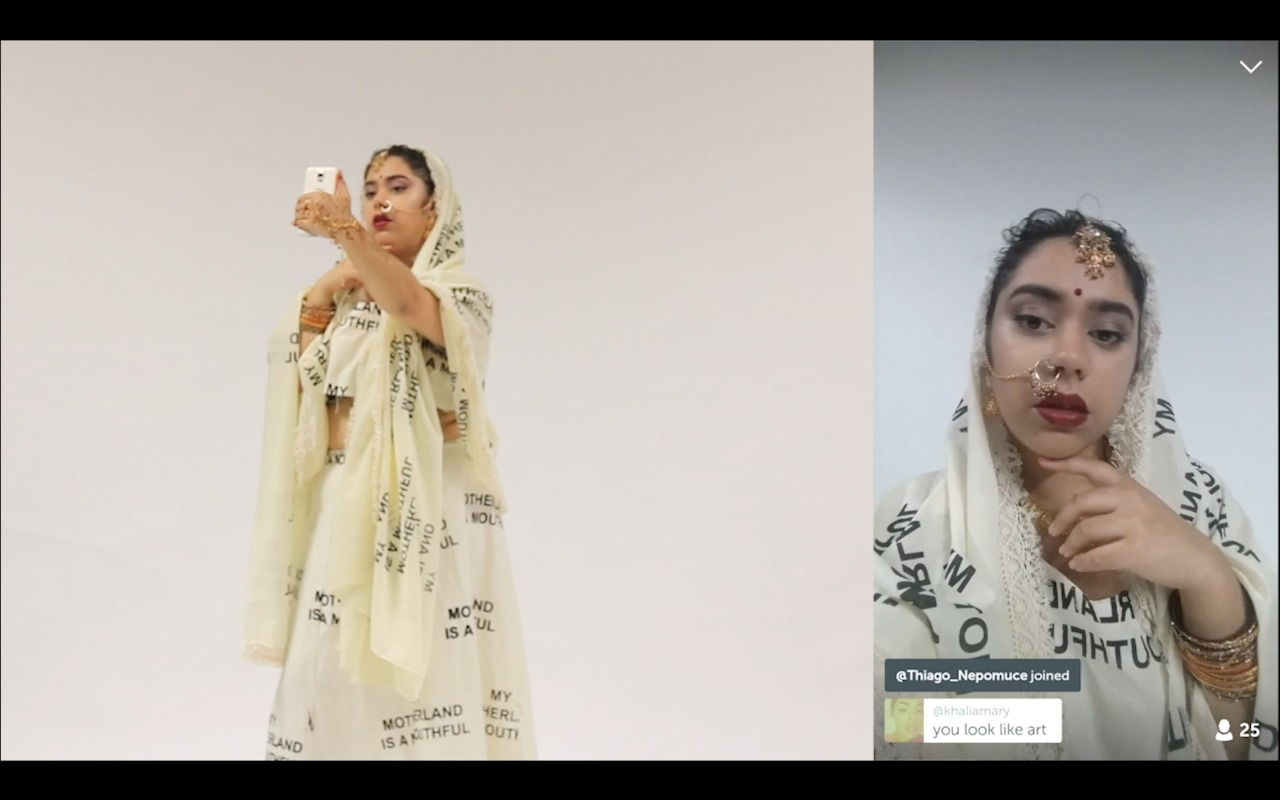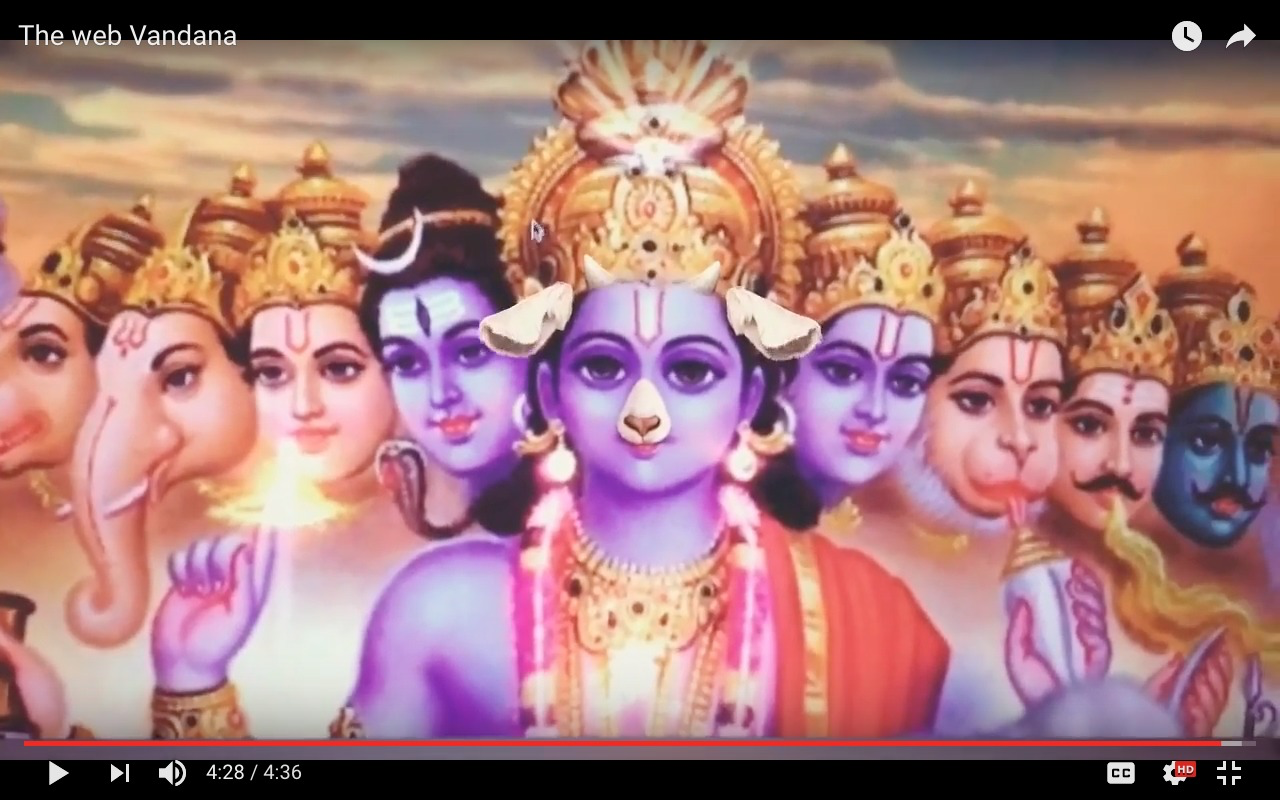
I first encountered The White Pube through a friend after a couple of headache-inducing visits to the Tate. I was disengaged and apathetic; every gallery I went to I felt like I didn’t “get” the art, or it wasn’t “for” me. Enter The White Pube.
A clever word play on “The White Cube”, self-confessed “art critic baby gods” Zarina Muhammad and Gabrielle de la Puente are the two women tired of “white people, white walls and white wine”, something Zarina commented upon as being a major motivation for setting up their art criticism and research project The White Pube. Gabrielle and Zarina were fed up with the lack of representation and accessibility in the art world, and as a result are slowly achieving a “complete overhaul of the white art world”, creating an alternative which challenges hegemonic ideas in the process.
gal-dem: Why did you think The White Pube was an important project to start?
The White Pube: When you think of an art critic, and the people who are in the arena of criticism, it’s not working class women, nor is it brown women. Literally, it is just white (essentially, politically white). Representation is scarce at best. Criticism is unilateral and boring and institutional, and we started The White Pube because we couldn’t find anything we actually wanted to read. Art criticism assumes an OTT language, one that is academic, neutral. Where a critic gets their authority from is their supposed neutrality, but that in itself is problematic, and bound to their perfect identity. We decided to do it in a different way and it has been v. fun.
Agreed, to be “neutral” is to be white essentially. Through your work with TWP do you think you’re changing what it means, what it should mean, to be an art critic?
I mean, critics are hailed for their supposed objectivity, but if I am going to the Tate and seeing a bunch of white men paining abstract art, how do I write about it without considering the fact that brown people don’t go to galleries, that this isn’t trying to engage people like myself? I’ve got my own hang ups about going to galleries, which is an inherent part of being a brown person in the white cube. Through TWP, we are trying to bring the immediate human response into part of the art experience. There is nothing wrong with speaking academically, there is value in that, but it becomes an issue when you state that that mode is the only form of knowledge that has value or weight. Good criticism is about seeing everything horizontally, how elements interact with and need each other. Current art critic rulers cannot see very far, so why would we bother paying attention to what they have to say?
By then including the subjective experience, do you think it is possible to be called an art critic?
Zarina: Well, we don’t know. I call myself an art writer because I’m not sure if I want to be a critic. I feel like critic implies an argument I don’t want to have in my writing. I feel like art is inaccessible enough and I prefer a more natural, informal response to art. I want our writing and reviews to sound like that, something everybody can read.
Gabrielle: But the role “critic” is a good challenge, too. Sometimes calling ourselves critics feels self-aggrandizing and performative, like we are playing devil’s advocates to the institution. And then that is self-fulfilling, because most of the time that’s exactly what we are doing, and it’s confident and exciting to lean in to that and to be like Ha Yes I am 22 and I am a Big Professional Art Critic and That Is My Job, And What?
And that’s something that definitely sets TWP apart from traditional critics. The tone (you only need to go to the website to see emoji’s, funky music and impressive photo shop collages), the removal of outdated formalities in your art encounters, and the lack of a disembodied academic tone are just one way TWP are reclaiming the subjective, in a unique personal way. (Since launching the platform the duo have not only explored their capabilities as critics, but curators too. Their first film screening, Zayn Malik Zindabad, was exclusively made up of South Asian moving image artists, something Zarina comments upon as being important in order to deconstruct what it means to be a part of the art world).
We used an open call to curate from as wide a scope as possible, and as a result had submissions from Punjabis to Nepalis. That was important for us, because artists of colour don’t get shows, and when they do they aren’t written about in a way that is open-minded. It’s a vacuum that needs filling. If we are showing you a film by a brown person, saying the art is about their “brownness” very quickly becomes trite. Through Zayn Malik Zindabad, we are forcing people to become more inclusive with their critical engagement, and to challenge initial assumptions that bind identity and quality together.
What was the reaction to the first Zayn Malik Zindabad like? Did it receive the reaction you were hoping for?
It definitely showed there is an audience for these art forms. What Zayn Malik Zindabad achieved in terms of widening the dialogue around brown art, the conversations we overheard afterwards, was exactly what we wanted: people discussing the art, what it made them feel and what they thought of it. Zarina cried after it. These artists were given pure focused attention. It was great to see videos received so well, especially when the audience was beyond studio culture.
That part about studio culture is interesting, I’d love to hear more about your thoughts on the popular culture versus high culture dualism, and do you think they are mutually exclusive?
One of the things we spoke about at our last exhibition ‘The Leaf of Pablo’ (in Hutt Collective X, Nottingham), was that writer Pablo Larios has academicised something Kanye did at the Brits: networking, working with your friends, being in solidarity, forming friendships. It is just what he did at the Brits. Bringing grime artists up is a massive statement of solidarity, and small examples like that show that the two levels aren’t so distant from each other that they can interact and play with each other. I am so academically interested in that one performance!
(The second time around, The White Pube are now showcasing a newer version of Zayn Malik Zindabad at the ICA, but Zarina was quick to highlight their growth has not meant compromise).
The entire exhibition at the ICA has been on our own terms; we have been in control of writing it, the write ups surrounding it, finding the artists. We’ve had a lot of freedom, which is needed. It wouldn’t make sense someone curating us curating the artists. The foundation of what TWP is for us is solidarity; we want to be on the side of other artists of colour and to give their work the respect, feedback and attention it deserves. Our curating and writing is more than just art, it is influenced by individual politics which isn’t something we’re going to compromise.
The White Pube are exhibiting Zayn Malik Zindabad (Part 2) at the ICA on January 7th, more information can be found here











